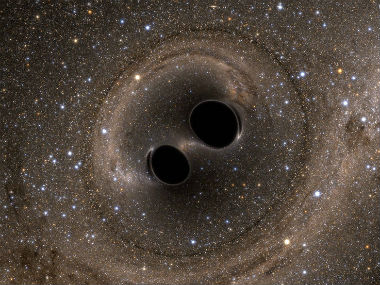In a research done by the NASA, it has been predicted that in the next ten years, scientists might be able to detect gravitational waves from at least one black hole binary. Thus, answering the questions regarding the formation of a galaxy. [caption id=“attachment_4208951” align=“alignleft” width=“380”]  Collision of two blackholes. NASA.[/caption] Usually, these **detectors** like LIGO or Laser Interferometer Gravitational-Wave Observatory or the Virgo are able to detect gravitational waves which are created when two spiraling small black holes. However, for those like massive black holes which merge and create gravitational waves are detected with the help of pulsar time array. These supermassive black holes are said to be 100 million times bigger than the Sun. These black holes which spiral towards each other to create low-frequency gravitational waves which are known to sound equivalent to ‘bass singers’. The pulsars are basically remnants from galaxy explosions or “dead” galaxies. Whenever two galaxies collide their dark supermassive hole spirals to form to merge with each other. However, their movement creates friction in the space-time which emits these gravitational waves. These gravitational waves are caught by the ever emitting pulsars. These abnormalities are caught by the researchers as the distortion shifts the Earth’s position as well, though slightly. “By expanding our pulsar timing array over the next ten years or so there is a high likelihood of detecting gravitational waves from at least one supermassive black hole binary”, said Chiara Mingareloo, who worked on this research while she was in Caltech. According to Nasa, it has been observed that the bigger a galaxy, the size of the black hole increases. Thus the merger of the blackholes happens for a short time. Thus, the merger of two black holes in Sombereo Galaxy took 160 million years, while M87, which was a larger galaxy, took 4 million years. Nasa predicts that the collision between the Milky Way and **Andromeda** , the nearest galaxy to the Milky Way, will take 4 billion years. “Detecting gravitational waves from billion-solar-mass black hole mergers will help unlock some of the most persistent puzzles in galaxy formation," said Leonidas Moustakas, a JPL research scientist.
It has been observed that the bigger a galaxy, the size of the black hole increases. Thus the merger of the blackholes happens for a short time.
Advertisement
End of Article


)



